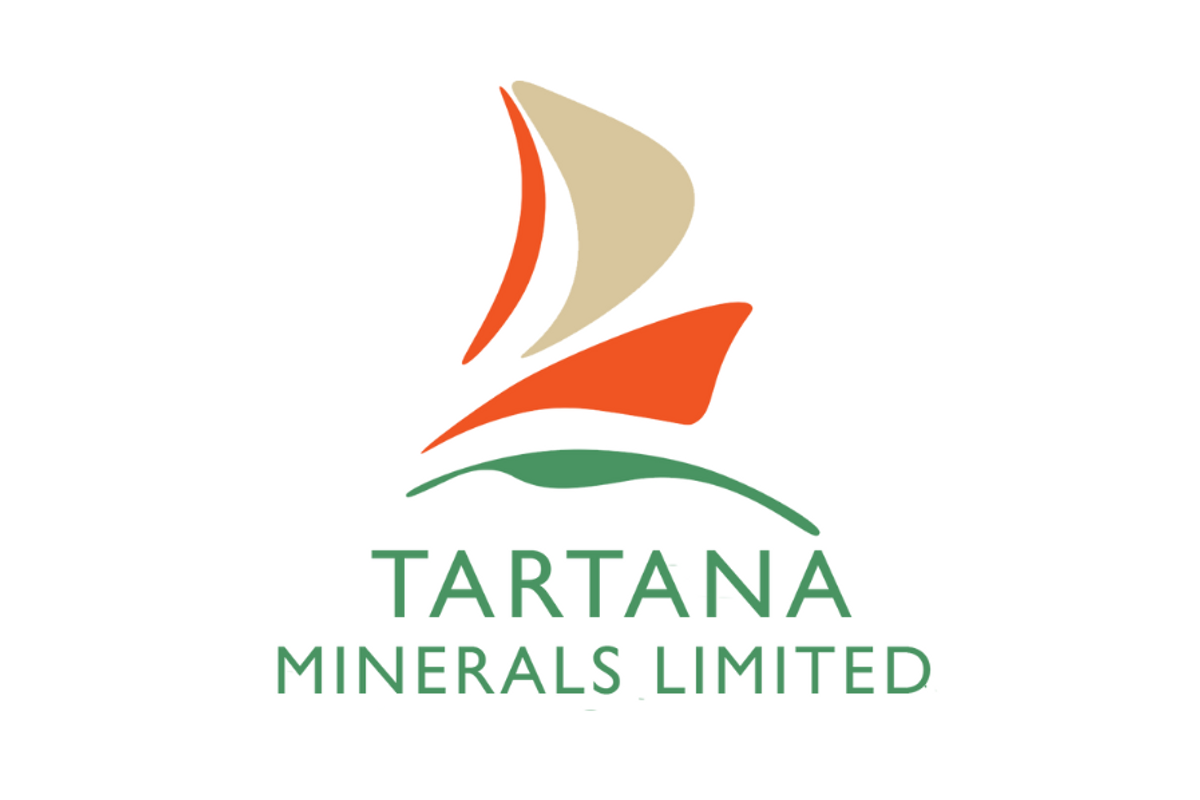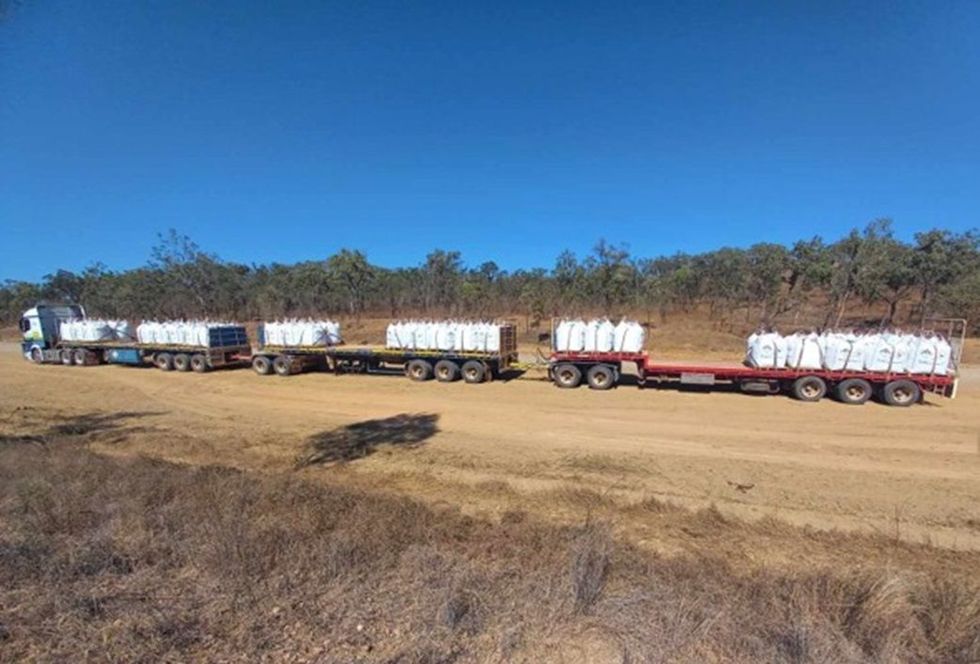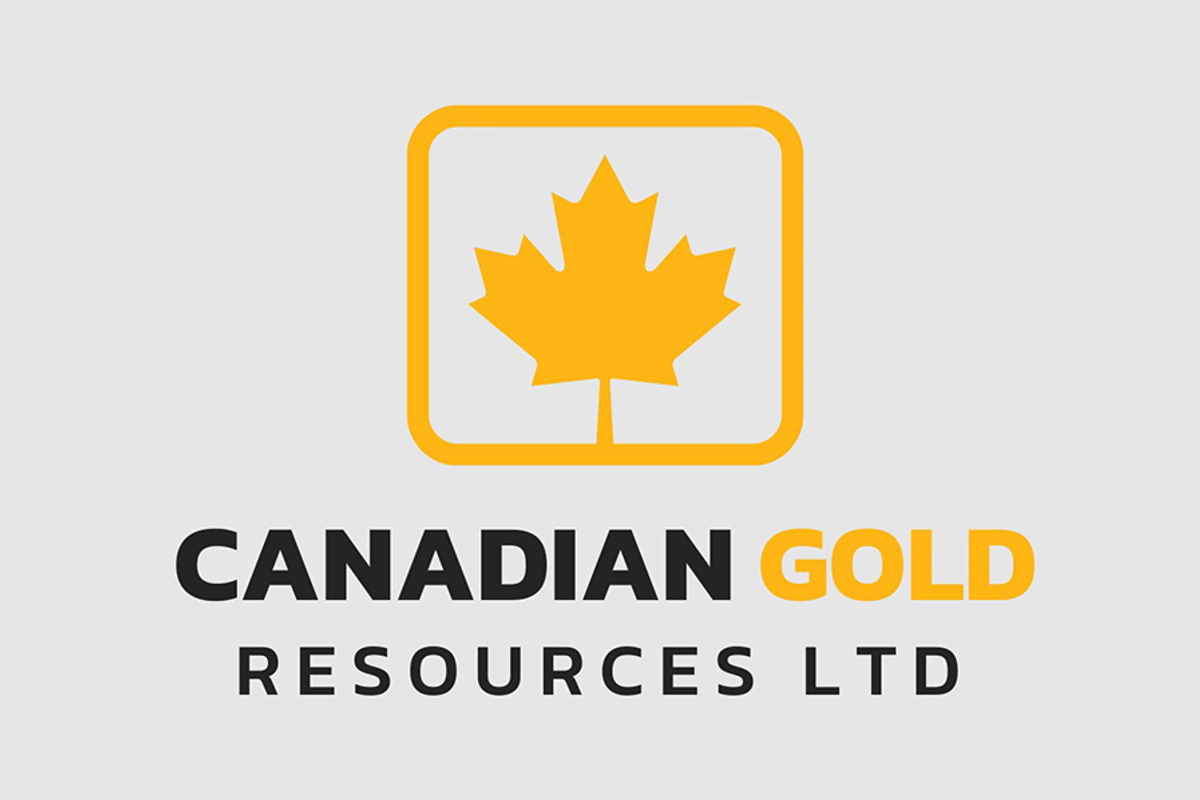
September 01, 2024
Tartana Minerals Limited (ASX: TAT) (the Company), is pleased to provide an update on activities at its Copper Sulphate plant, with a major shipment being completed last week totalling 150 tonnes. The product was sold via the Company’s 100% offtake partner, Kanins International, to one of the largest mining operations in the Northern Territory.
Highlights:
- Significant milestone achieved at Copper Sulphate Pentahydrate (Copper Sulphate) with 150 tonne shipment completed last week with product being sold, via offtaker Kanins, to one of the largest mining operations in the Northern Territory.
Tartana Minerals Managing Director, Stephen Bartrop, commented:
“This shipment marks an important milestone as it represents our largest shipment to-date within the Company’s recent sales to the North Australian mining industry. Improved plant performance has led to increased product quality and which is continuing to build a strong market for our ongoing copper sulphate pentahydrate production.”
Plant Production and Ongoing Activities
Production for the Company’s next shipment, targeted to be approximately 70 tonnes, is well advanced with approximately half the shipment completed and in storage with the remainder to be produced next week.
Plant production is ongoing with a significant improvement in plant reliability and copper sulphate pentahydrate quality which utilises Tartana’s proprietary process for creating free flowing crystal with low levels of impurities.
Ongoing exploration and metallurgical work to support future Copper Sulphate production
As reported in the June Quarterly Report (reported on the 31 July 2024) drilling of metallurgical hole D15 has been completed to a total depth of 300.8 m. This metallurgical hole is providing primary copper mineralisation samples for metallurgical testwork including flotation recoveries, potential concentrate grades and ore sorting. The results of this testwork and the core assaying are well advanced with the results expected shortly.

Click here for the full ASX Release
This article includes content from Tartana Minerals Limited, licensed for the purpose of publishing on Investing News Australia. This article does not constitute financial product advice. It is your responsibility to perform proper due diligence before acting upon any information provided here. Please refer to our full disclaimer here.
TAT:AU
The Conversation (0)
12 August
Financing Update and AGM Date
Tartana Minerals (TAT:AU) has announced Financing Update and AGM DateDownload the PDF here. Keep Reading...
31 July
Quarterly Activities/Appendix 5B Cash Flow Report
Tartana Minerals (TAT:AU) has announced Quarterly Activities/Appendix 5B Cash Flow ReportDownload the PDF here. Keep Reading...
13 May
Director led financing and change of Chairman
Tartana Minerals (TAT:AU) has announced Director led financing and change of ChairmanDownload the PDF here. Keep Reading...
30 April
Quarterly Activities/Appendix 5B Cash Flow Report
Tartana Minerals (TAT:AU) has announced Quarterly Activities/Appendix 5B Cash Flow ReportDownload the PDF here. Keep Reading...
24 April
Beefwood Project Clarification and Drilling Update
Tartana Minerals (TAT:AU) has announced Beefwood Project Clarification and Drilling UpdateDownload the PDF here. Keep Reading...
5h
Canadian Gold Resources to Expand Maiden Diamond Drill Program & Provides Update on Bulk Sampling Program at Lac Arsenault, LIFE Offering Update; Disclosure Corrections
Canadian Gold Resources Ltd. (TSXV: CAN) ("Canadian Gold" or the "Company") provides an operational update regarding its maiden diamond drill program and the planned 5,000-tonne bulk sampling program at the 100%-owned Lac Arsenault Project in Québec's Gaspé Peninsula, as well as recent changes... Keep Reading...
7h
China’s Gold Market Enters Turbulent Transition as New VAT Rules Take Effect
China’s gold industry is entering a period of rapid adjustment after Beijing implemented a major overhaul of value-added tax (VAT) rules on physical gold. The reform, which took effect on the first of November run through December 31, 2027, ending the long-standing practice of allowing full tax... Keep Reading...
23h
Top 5 Australian Mining Stocks This Week: Nova Minerals Rides on Growing Antimony Interest
Welcome to the Investing News Network's weekly round-up of the top-performing mining stocks listed on the ASX, starting with news in Australia's resource sector.Antimony-focused gold company Nova Minerals takes the lead in this week's list, alongside mining stocks focused on gold, lithium and... Keep Reading...
23h
Gold Price Rallies "Like a Meme Stock," Breaks US$4,200 Again
As its record-setting year continues, gold is on its way to posting its strongest annual performance since 1979, up an impressive 58 percent year-to-date as of Wednesday (November 12). The yellow metal once again broke past US$4,200 per ounce this week, moving closer to its all-time high of... Keep Reading...
23h
Top 7 ASX Gold ETFs in 2025
The price of gold reached record highs in 2025, driven by global economic uncertainty stemming from shifting US trade policy and escalating geopolitical tensions in the Middle East.For many investors, gold is a tool for diversification. The precious metal is known for its ability to act as a... Keep Reading...
13 November
Mount Hope Mining Reports High-grade Gold Results, Attracts New Investors, CEO Says
Mount Hope Mining (ASX:MHM) has announced strong assay results from its maiden drilling program at the Mount Solitary gold prospect in New South Wales’ Cobar region, highlighting the potential for a significant high-grade gold system. CEO and Managing Director Fergus Kiley said the campaign... Keep Reading...
Latest News
Latest Press Releases
Related News
TOP STOCKS
American Battery4.030.24
Aion Therapeutic0.10-0.01
Cybin Corp2.140.00






